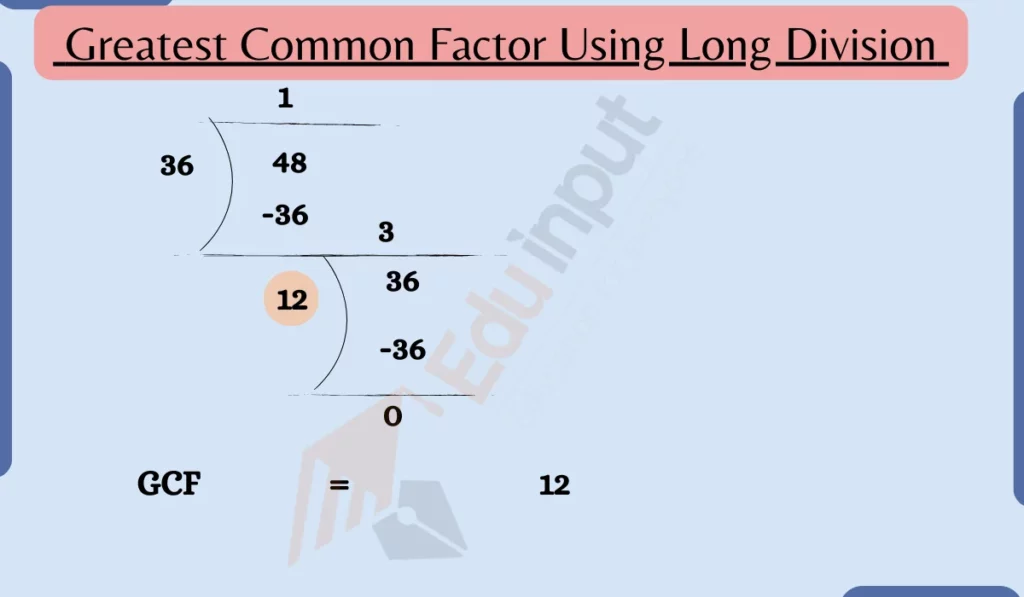How to Find the Greatest Common Factor (GCF)
Greatest common factor (GCF), also known as the greatest common divisor (GCD), of two or more integers is the largest integer that divides them without a remainder. Finding the GCF is useful for reducing fractions to their simplest forms.
In this article, we will discuss how to find greatest common factors.
Factors and Multiples
A factor is a number that divides evenly into another number.
For example, the factors of 12 are 1, 2, 3, 4, 6, and 12.
A multiple is a number that can be divided by another number without a remainder.
For example, multiples of 5 are 5, 10, 15, 20, and so on.
To find the GCF of two or more numbers, you need to find the largest factor that they have in common.
Using Prime Factorization
One method to find the GCF is prime factorization. This involves expressing a number as the product of its prime factors. Prime numbers only have two factors – 1 and themselves. By breaking down numbers into primes, it becomes easier to find the common factors.
Follow these steps for prime factorization:
- Break down the numbers into prime factors.
- Circle or highlight the common prime factors in all the numbers.
- Multiply the common prime factors to find the GCF.
Example

Find the GCF of 12 and 18.
12 = 2 x 2 x 3
18 = 2 x 3 x 3
The common prime factor is 2 x 3 = 6
Therefore, the GCF of 12 and 18 is 6.
Using Long Division
You can also find the GCF using long division. Follow these steps:
- Divide the larger number by the smaller number.
- If there is a remainder, divide the smaller number by the remainder.
- Keep dividing until you get a zero remainder.
- The last divisor before getting a zero remainder is the GCF.
Example

Find the GCF of 48 and 36.
48 divided by 36 = 1 remainder 12
36 divided by 12 = 3
Therefore, the GCF of 48 and 36 is 12.
Solved Examples
Example
GCF of 15 and 25
Prime factors:
15 = 3 x 5
25 = 5 x 5
Common factor = 5
GCF = 5
Example
GCF of 18 and 24
18 = 2 x 3 x 3
24 = 2 x 2 x 2 x 3
Common factors = 2 x 3
GCF = 6
Example
GCF of 42 and 70
42 divided by 70 = 0 remainder 42
70 divided by 42 = 1 remainder 28
42 divided by 28 = 1 remainder 14
28 divided by 14 = 2
GCF = 14
Finding the GCF of More Than Two Numbers
To find the GCF of more than two numbers:
- List all the prime factors of each number
- Identify the common prime factors
- Take the product of the common prime factors to find the GCF
Example
GCF of 12, 18 and 30:
12 = 2 x 2 x 3
18 = 2 x 3 x 3
30 = 2 x 3 x 5
Common factors = 2 x 3
GCF = 6
FAQs
Can the GCF of two numbers be 1?
Yes, if the two numbers do not have any common factors other than 1, then their GCF is 1. For example, the GCF of 7 and 11 is 1
How is the GCF used in fractions?
The GCF can be used to reduce fractions to their simplest forms. For example, the fraction 36/60 can be reduced by dividing both the numerator and denominator by the GCF of 12 to get 3/5.
Is the GCF always a factor of the numbers?
Yes, the GCF is always a factor of the given numbers. By definition, it is the largest factor that divides all the numbers exactly.
Can you apply the GCF when adding or subtracting fractions?
Yes, you can find a common denominator by using the GCF of the denominators when adding or subtracting fractions. This makes it easier to find a common denominator.





Leave a Reply